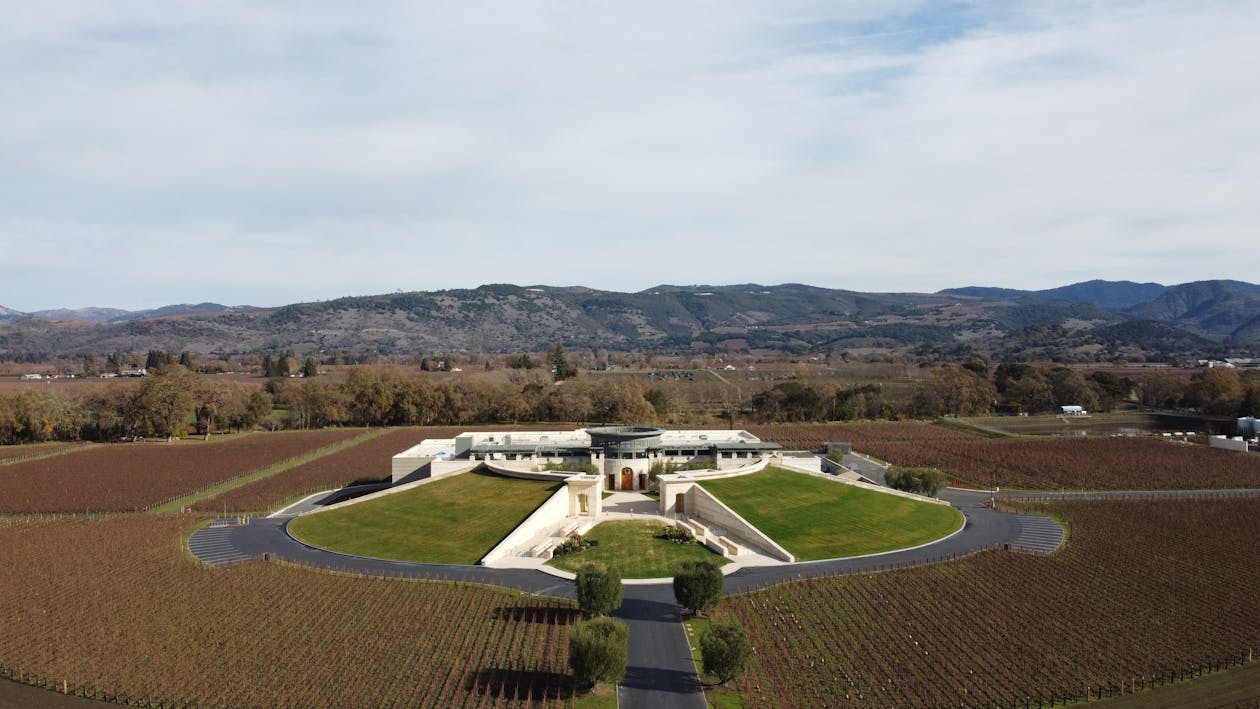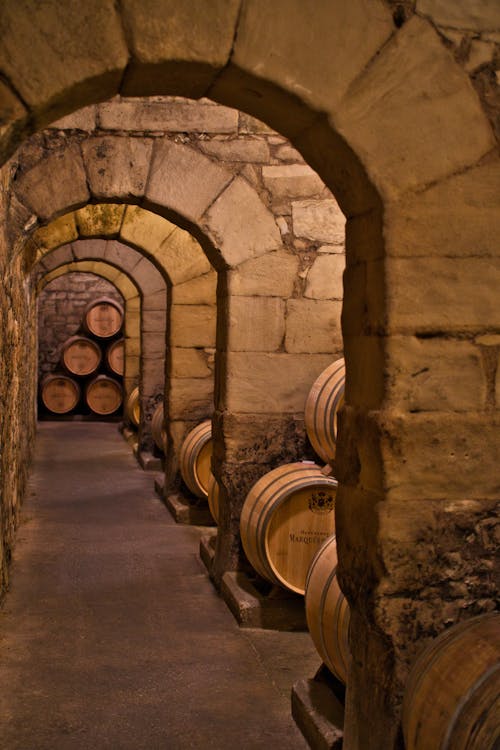Wine architecture brings together the artistry of winemaking and innovative design, shaping how we experience wine. These striking spaces, created to both elevate the ambiance and serve practical production needs, have become a major draw for wine enthusiasts. With architecture as a growing part of the wine industry’s appeal, many wineries have become must-visit destinations for their unique structures as much as their wines. In this post, we’ll explore the evolution of winery architecture, its key styles, and its impact on wine tourism, helping you see how these spaces transform the wine experience.
Historical Context
The story of winery architecture has roots in ancient times when wine was often stored in cellars carved into mountainsides or built from durable stone. Early winery structures prioritized function, emphasizing cool and stable environments for aging wine. Over time, architectural movements like the Renaissance and Gothic styles inspired elaborate winery designs, reflecting the cultural importance of wine. In the 20th century, modernism brought a minimalist aesthetic that emphasized form and function, while the 21st century has ushered in an era of sustainability, where eco-conscious materials and energy-efficient designs are at the forefront. Each evolution marks the wine industry’s adaptation to both functional needs and aesthetic aspirations.
Architectural Styles
Wineries worldwide showcase a variety of architectural styles that reflect their locations and cultural backgrounds. Here are some prominent styles found in wine architecture:
Traditional Styles
- Mediterranean: Found in southern Europe, this style includes terra-cotta roofs, arched windows, and open courtyards, blending seamlessly with the surrounding landscape. Its warmth and elegance create an inviting space.
- Colonial: Common in the Americas and South Africa, Colonial-style wineries feature symmetrical designs, tall columns, and decorative brick or stone, emphasizing tradition and heritage.
Modern and Minimalist Designs
- Geometric & Sleek: Minimalist wineries use clean lines, open spaces, and glass for natural lighting. This style blends contemporary aesthetics with functionality, creating a serene environment.
Eco-Friendly and Sustainable Designs
- Green Roofs & Recycled Materials: Sustainable wineries are designed to minimize environmental impact. These structures often use green roofs, natural ventilation, and materials like recycled wood or local stone.
- Earth-Integrated: Wineries built into hillsides use the earth’s insulation to maintain ideal temperatures while reducing energy usage.
Functionality vs. Aesthetics
Balancing aesthetic appeal and practical design is crucial in winery architecture. Each space is crafted to enhance both production and the visitor experience, from temperature-controlled cellars to spacious tasting rooms with panoramic views.
Example: Opus One Winery, Napa Valley

Designed by Scott Johnson, Opus One blends into the landscape with terraces that provide insulation and an open-air courtyard that serves as both a functional and inviting space for visitors. It is a perfect example of how winery architecture merges beauty with purpose.
Case Studies
1. Marqués de Riscal Winery, Spain

- Architect: Frank Gehry
- Design: Gehry’s structure combines metallic ribbons with traditional forms, blending avant-garde art with Rioja’s wine heritage.
- Landscape: The undulating ribbons mimic the vineyard’s hills, capturing the colors of red wine and reflecting the region’s cultural depth.
2. Antinori nel Chianti Classico, Italy

- Architect: Archea Associati
- Design Elements: Embedded into a Tuscan hillside, the terracotta structure reflects the landscape and heritage, while its gravity-fed design ensures efficient production.
- Significance: This eco-friendly design showcases the blend of tradition and innovation in Italian winemaking.
3. Mission Hill Winery, Canada
- Architect: Tom Kundig
- Design Features: The winery’s bell tower and stone structures offer breathtaking views over Okanagan Lake, drawing inspiration from monasteries and blending modernism with the natural landscape
Impact on Wine Tourism
Architectural wineries have become a cornerstone of wine tourism, drawing visitors eager to experience the unique atmosphere each design offers. Many wineries organize tasting tours, events, and educational experiences that allow guests to appreciate both the wine and the design. In regions like Napa Valley and Tuscany, wine architecture has helped build entire tourism ecosystems, creating jobs, supporting local economies, and enhancing the profile of the wine region.
Example: Bodega Garzón, Uruguay
Built with eco-friendly materials, Bodega Garzón attracts architecture and wine lovers alike, bolstering local tourism and promoting sustainability in wine production.
Future Trends in Wine Architecture
The future of wine architecture is likely to see continued emphasis on sustainability, high-tech innovation, and multipurpose spaces.
- Sustainable Materials: Expect an increase in the use of recycled or eco-friendly materials.
- Integrated Tech: Technology is enhancing experiences with virtual tours, automated processes, and interactive tasting experiences.
- Multifunctional Spaces: Wineries will likely include art galleries, restaurants, and even accommodation to create an immersive, full-service experience.
The architectural beauty of a winery adds depth and richness to the wine experience, inviting guests to savor both the space and the wine. Wine architecture reflects the winemaking craft’s cultural heritage, contributes to tourism, and inspires future sustainability efforts. Whether modern and minimalist or rooted in tradition, winery architecture offers visitors a unique way to engage with wine. For wine and architecture enthusiasts, exploring these wineries is an unforgettable experience that transcends tasting and creates a lasting connection to the land and its story.
Take your journey to experience the places where wine and design converge, and witness firsthand how architecture shapes the essence of wine.
Read more








